M
Showing 13–24 of 38 results
-


Kharbuja Giri (Without Shell) – खरबूजा गिरी – Muskmelon Seed – cucumis melo
₹110.00 – ₹1,215.00Quick ViewIn Ayurveda, muskmelon seeds are classified as “Shita Virya” and “Madhura Rasa.”
Shita Virya refers to foods or herbs with cooling properties, and muskmelon seeds are believed to have a cooling effect on the body. They are recommended for people who have excess heat in their body, as they can help to reduce inflammation, acidity, and heartburn.
- Rasa (taste): Muskmelon seeds are said to have a sweet taste (madhura rasa).
- Virya (energy): They are cooling in nature (shita virya).
- Vipaka (post-digestive effect): They have a sweet post-digestive effect (madhura vipaka).
- Guna (quality): They are light and dry in quality (laghu and ruksha guna).
- Dosha effect: Muskmelon seeds are believed to pacify Pitta dosha, but can aggravate Kapha dosha if consumed in excess.
Overall, the cooling and sweet properties of muskmelon seeds make them a popular choice in Ayurveda for promoting good health and treating various conditions.
-

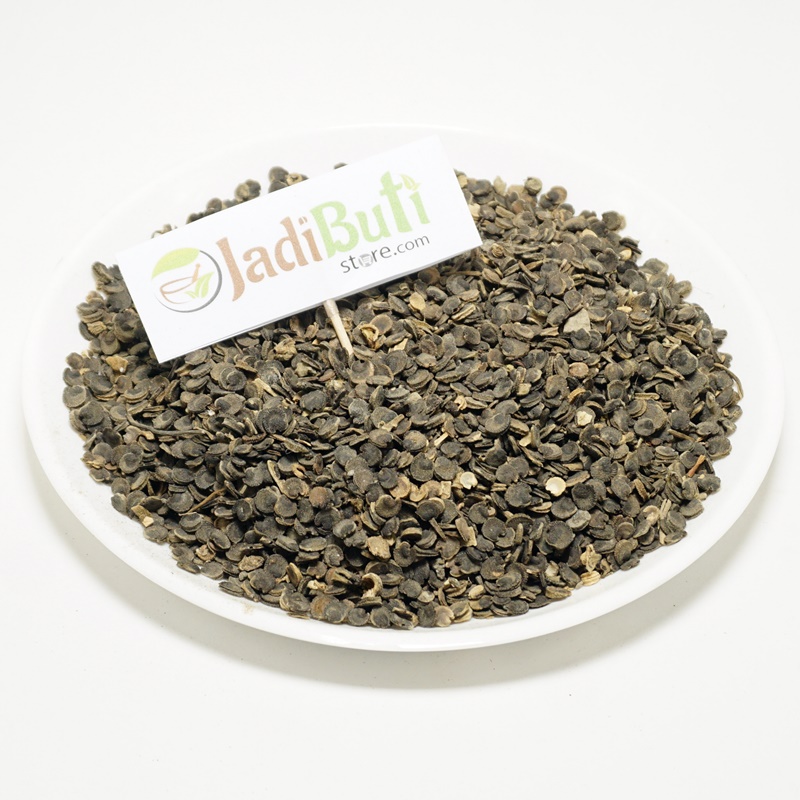
Khatmi – खात्मी – Marshmallow plant – Althaea Officinalis
₹160.00 – ₹1,250.00Quick ViewKhatmi | Common Name: Marshmallow seed
Botanical Name: Althaea officinalis | Plant Family: Malvaceae
Parts Used: Seeds
Active Compounds: The seeds contain mucilage, flavonoids, and other polysaccharides.
Ayurvedic Properties:
- Rasa (taste): Madhura (sweet)
- Guna (qualities): Guru (heavy), Snigdha (unctuous)
- Virya (potency): Sheeta (cooling)
- Vipaka (post-digestive effect): Madhura (sweet)
- Dosha effect: Pacifies Pitta and Vata doshas, may aggravate Kapha dosha in excess
-
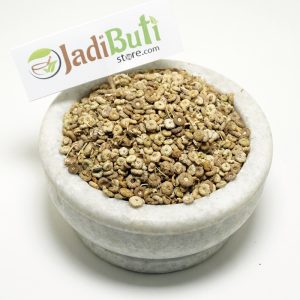
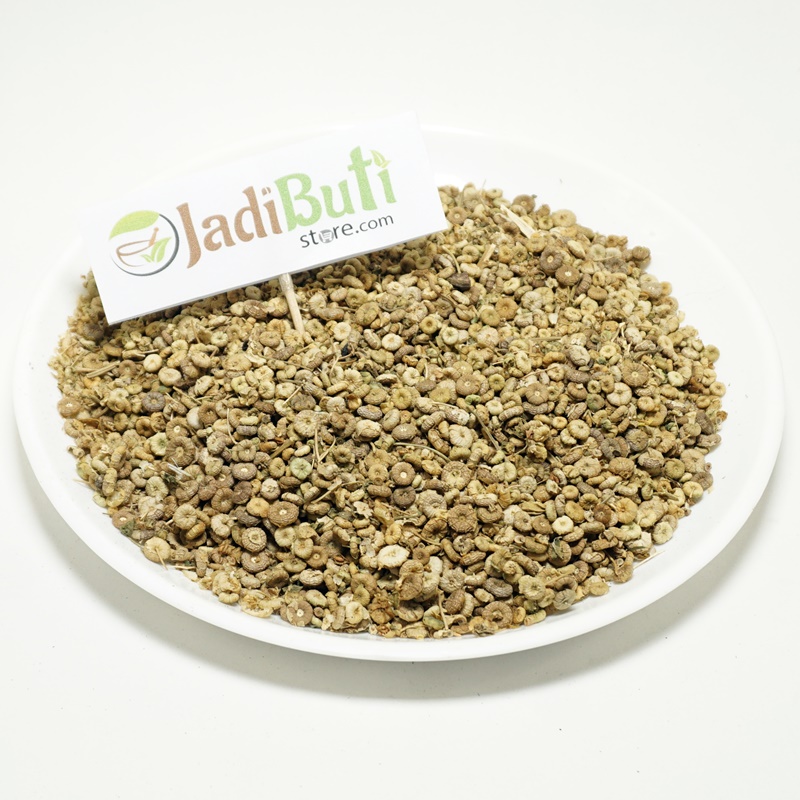
Khubbaji – खुब्बाजी – Mallow – Malva Sylvestris
₹280.00 – ₹2,295.00Quick ViewCommon Mallow, High Mallow | Ayurvedic Name: Khubbaji, Kanghi
Scientific Name: Malva Sylvestris | Family: Malvaceae
vernacular names : Common Mallow, High Mallow, Blue Mallow, French Hollyhock, Common Hollyhock, Tall Mallow, Garden Mallow, Wood Mallow, Cheese-cake, Round Dock
Ayurvedic Property Ayurvedic Use Rasa (Taste) Madhura (Sweet), Kashaya (Astringent) Guna (Quality) Guru (Heavy), Snigdha (Oily), Picchila (Slimy) Virya (Potency) Shita (Cooling) Vipaka (Post-Digestive Taste) Madhura (Sweet) Dosha (Effect on Humors) Balances Pitta and Kapha Doshas, may aggravate Vata Dosha in excess Dhatu (Tissue) Plasma, Blood, Muscle, Bone Srotas (Channel) Respiratory, Digestive, Urinary, Reproductive Action Anti-inflammatory, Antioxidant, Anti-microbial, Anti-allergic, Muscle Relaxant, Wound Healing, Diuretic -
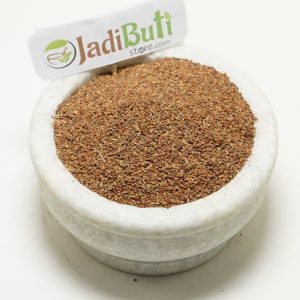
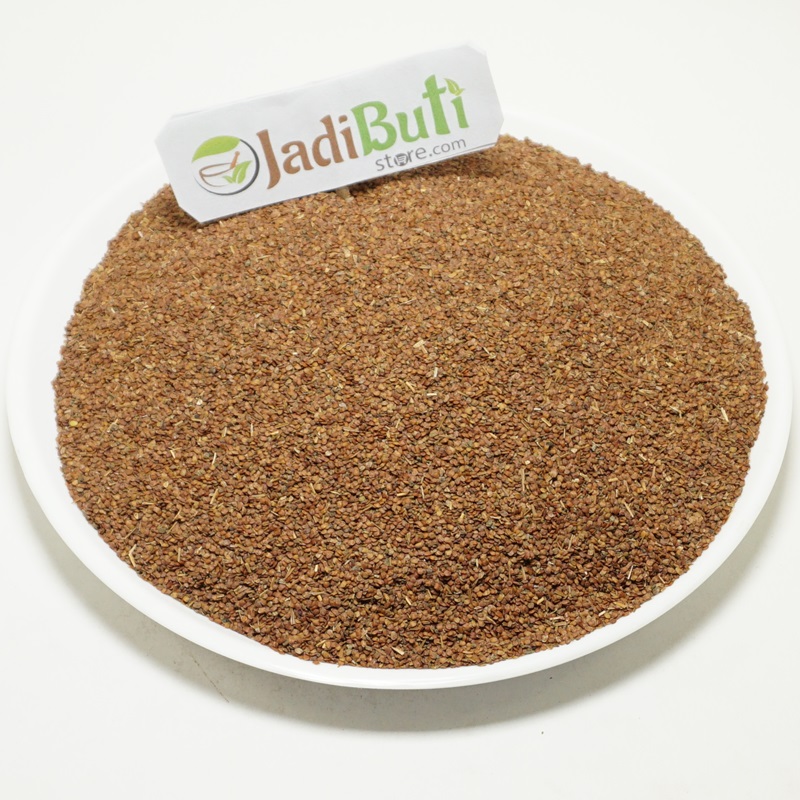
Lajwanti – लाजवंती – Sensitive Plant – Mimosa pudica
₹160.00 – ₹1,225.00Quick ViewLajwanti seeds | Scientific name: Mimosa pudica
Ayurvedic properties:
- Anti-inflammatory
- Digestive
- Respiratory
- Skin health
- Diuretic
- Nervous system health
- Anti-diabetic
- Cardiovascular health
- Immune system health
- Menstrual health
- Anti-cancer
- Wound healing
Ayurvedic Property Classification Rasa (taste) Bitter (tikta) and astringent (kashaya) Virya (energy) Cooling (shita) Vipaka (post-digestive effect) Pungent (katu) Guna (properties) Light (laghu), dry (ruksha), and sharp (tikshna) -


Mahua(Mahuya) – महुआ – Pongamia – Madhuca indica
₹90.00 – ₹690.00Quick ViewMahua | Botanical Name: Madhuca longifolia
Other Names: Indian butter tree, Madhuca, Mahwa
Ayurvedic Properties of Mahua Description Rasa (Taste) Sweet, Bitter Virya (Energy) Cooling Vipaka (Post-Digestive Effect) Sweet Guna (Qualities) Light, Dry Ayurvedic Benefits:
- Digestive health
- Respiratory health
- Anti-inflammatory properties
- Skin health
- Antioxidant properties
- Immunity boosting
- Antimicrobial properties
- Anti-diabetic properties
- Cardiovascular health
- Nervous system health
- Anticancer properties
- Wound healing
- Reproductive health
-


Majith – Manjistha – Indian Madder – Rubia cordifolia
₹140.00 – ₹1,170.00Quick ViewManjistha is classified as a bitter, astringent, sweet, and cooling herb. It is believed to have a balancing effect on the Pitta and Kapha doshas, while increasing Vata dosha.
.
Ayurvedic classification of Manjistha (Rubia cordifolia):
Ayurvedic Classification Description Rasa (taste) Astringent, bitter, and sweet Guna (qualities) Heavy, dry, and cold Virya (potency) Cooling Vipaka (post-digestive effect) Sweet Dosha effect Pacifies Pitta and Kapha doshas Karma (actions) Blood purifier, detoxifying, diuretic, anti-inflammatory, and antioxidant Dhatu (tissue) affinity Works primarily on the blood and lymphatic tissues Srotas (channel) affinity Works primarily on the circulatory and lymphatic channels Prabhava (special effect) Purifies and cools the blood, supports healthy skin, and promotes overall detoxification Active compounds and their benefits found in manjistha (Rubia cordifolia):
Active Compound Benefits Anthraquinones (alizarin, purpurin, and munjistin) Anti-inflammatory, antioxidant, and antimicrobial properties Tannins Anti-inflammatory, antioxidant, and wound-healing properties Flavonoids (quercetin, kaempferol, and rutin) Anti-inflammatory, antioxidant, and anti-cancer properties Xanthones Anti-inflammatory, antioxidant, and anti-cancer properties Glycosides Cardio-protective, hepatoprotective, and immune-boosting properties Betaine Liver-protective and anti-inflammatory properties -
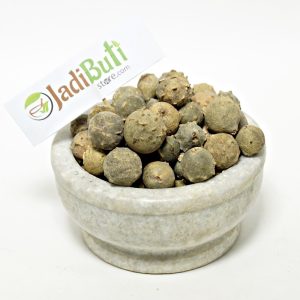
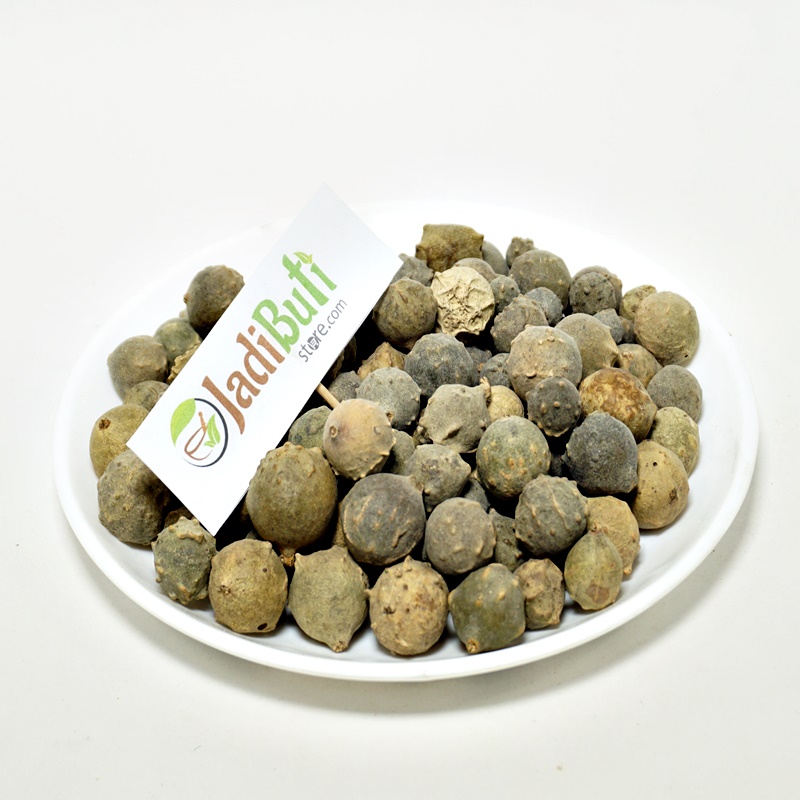
Majuphal – माजूफल – Gallnut – Quercus infectoria
₹220.00 – ₹1,710.00Quick ViewMajufal | Oak Gall | Gallnut
Scientific Name : Quercus infectoria.
Ayurvedic classification of Gallnut (Quercus infectoria):
Ayurvedic Classification Description Rasa (taste) Astringent Guna (qualities) Light, dry, piercing, and rough Virya(potency) Cooling Vipaka (post-digestive effect) Pungent Dosha effect Balances Pitta and Kapha doshas Karma (actions) Astringent, anti-inflammatory, anti-bacterial, anti-fungal, anti-viral, and styptic Dhatu (tissue) affinity Works primarily on the blood, plasma, and reproductive tissues Srotas (channel) affinity Works primarily on the circulatory, reproductive, and respiratory channels Prabhava (special effect) Helps to promote wound healing and prevent infection Active compounds and their benefits found in gallnut:
Active Compound Benefits Tannins Antioxidant, anti-inflammatory, and astringent properties Gallic acid Antioxidant, anti-inflammatory, and antimicrobial properties Ellagic acid Antioxidant, anti-inflammatory, and anticancer properties Quercetin Antioxidant, anti-inflammatory, and antihistamine properties Camphor Analgesic, anti-inflammatory, and antimicrobial properties Terpenoids Anti-inflammatory, antinociceptive, and antimicrobial properties -
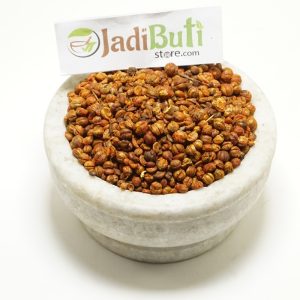
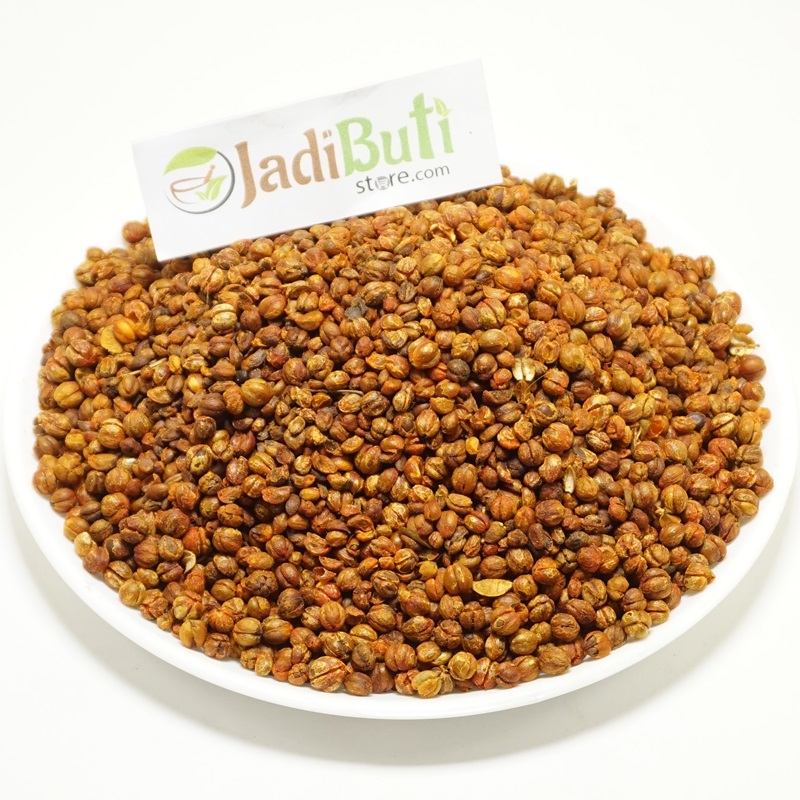
Malkangni – मालकांगनी – Black oil Tree – Celastrus paniculatus
₹760.00 – ₹6,290.00Quick ViewMalkangni seeds, Intellect Tree seeds
Scientific name: Celastrus paniculatus | Plant family: Celastraceae
Ayurvedic classification: | Parts used: Seeds
****** ***** Rasa (Taste) Tikta (Bitter), Katu (Pungent) Guna (Quality) Laghu (Light), Tikshna (Sharp) Virya (Potency) Ushna (Hot) Vipaka (Post-digestive effect) Katu (Pungent) Dosha Effect Balances Vata and Kapha doshas, increases Pitta dosha Action (Karma) Medhya (Nervine tonic), Vrushya (Aphrodisiac), Balya (Increases strength), Deepana (Digestive stimulant), Pachana (Digestive), Shothahara (Anti-inflammatory), Sangrahi (Astringent), Hridya (Heart tonic) -
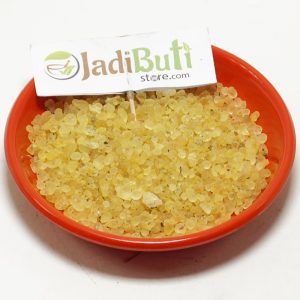
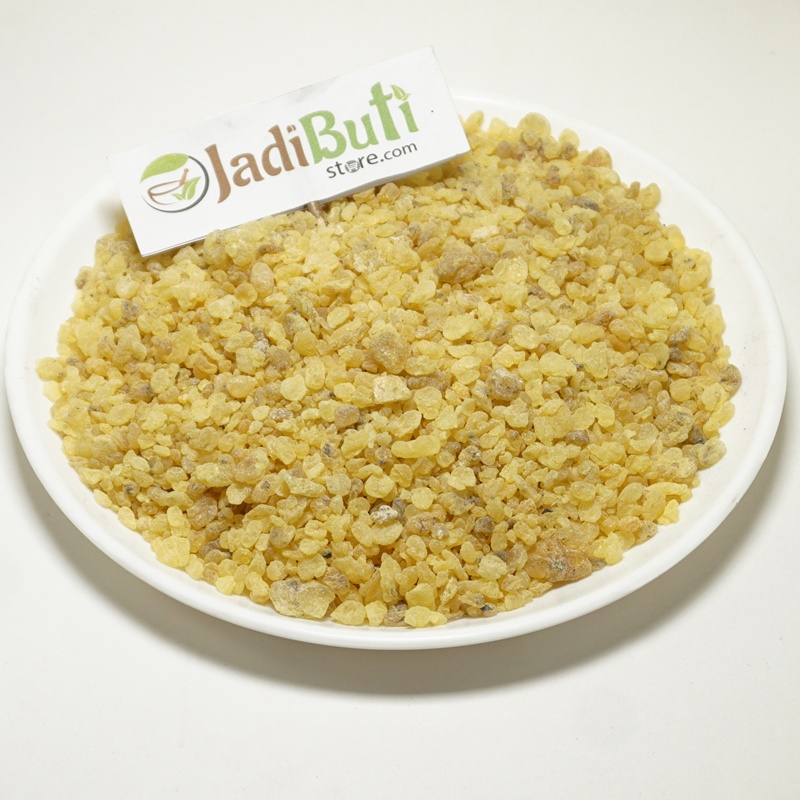
Mastagi Kota – मस्तगी कोटा – Mastic Tree – Pistacia lentiscus
₹650.00 – ₹8,695.00Quick ViewName: Mastic gum , Mastagi Kota | Other names: Mastiha, Mastica, Mastagi, Mastaki
Scientific name: Pistacia lentiscus | Plant family: Anacardiaceae
Parts used: Resin
Uses: Digestive health, oral health, anti-inflammatory effects, antioxidant properties, skin health
Dosage: There is no standard dosage for mastic gum, but supplements typically contain 500-1,000 mg per day. It’s best to follow the manufacturer’s instructions or consult with a healthcare provider for personalized dosing recommendations.
-


Mastagi Rumi – मस्तगी रूमी – Mastic Gum – Pistacia lentiscus
₹950.00 – ₹26,785.00Quick ViewOur mastic gum is carefully harvested and processed to ensure maximum purity and potency, providing you with a natural and effective way to support your overall health and wellbeing.
Our mastic gum is rich in antioxidants and has been shown to have powerful anti-inflammatory and antimicrobial properties. It may help to promote digestive health, support oral health, and improve respiratory function. Our mastic gum is also known for its potential cholesterol-lowering effects and blood sugar regulating properties, making it a great supplement for those looking to maintain healthy cholesterol and blood sugar levels.Our mastic gum is 100% natural and free from any synthetic additives, making it a safe and healthy supplement for daily use. mastic gum is gluten-free, non-GMO, and suitable for vegans and vegetarians.
-
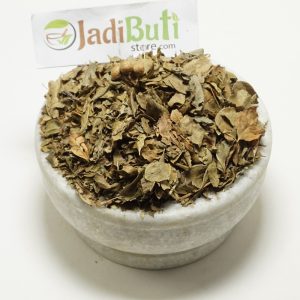
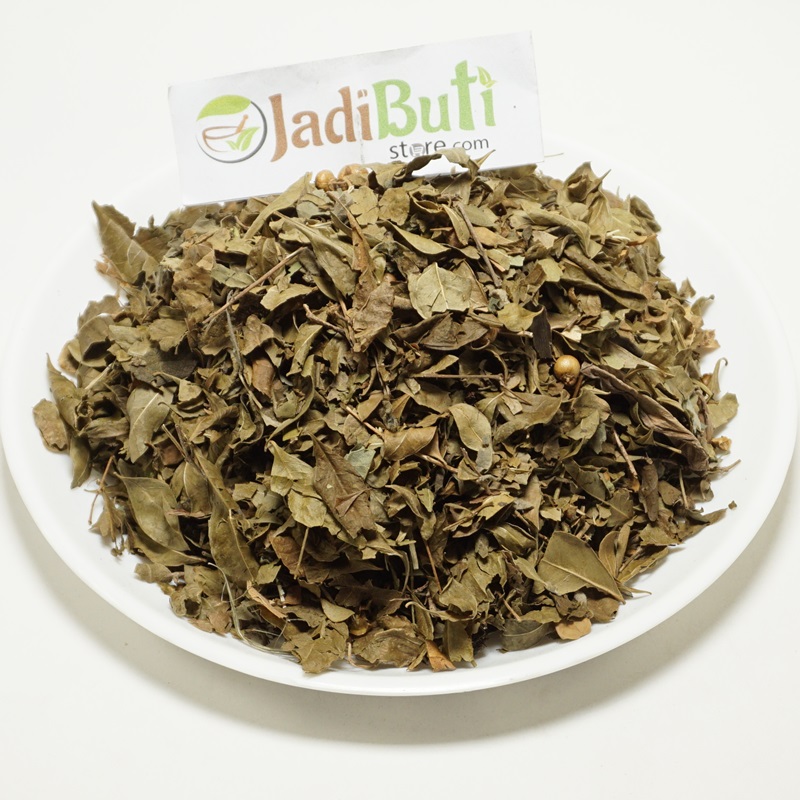
Mehndi Patta – मेहँदी पत्ता – Lawsonia inermis
₹90.00 – ₹720.00Quick ViewMehandi, Henna | Botanical name: Lawsonia inermis | Family: Lythraceae
Parts used: Leaves, bark, and roots | This product is Organic Henna Leaves Dried
Native region and distribution: Mehandi is native to North Africa, the Middle East, and South Asia. It is now widely cultivated in tropical and subtropical regions around the world.
Ayurvedic Classification Properties Guna (qualities) Cooling, astringent, bitter Rasa (taste) Bitter Vipak (post-digestive effect) Pungent Dosha effect Pacifies pitta and kapha doshas, but can aggravate vata when used in excess Dhatu (tissue) effect Acts mainly on the rakta dhatu (blood tissue) and also on the mamsa dhatu (muscle tissue) Srotas (channel) effect Acts mainly on the raktavaha srotas (blood channels) and also on the annavaha srotas (digestive channels) Health benefits:
- Cooling and astringent properties make it useful for treating conditions related to excess heat, such as fever, inflammation, and hot flashes.
- Bitter taste and digestive properties make it useful for improving digestion and eliminating toxins from the body.
- Can be used topically to promote healthy skin and hair.
- Has been traditionally used for its natural dyeing properties.
-
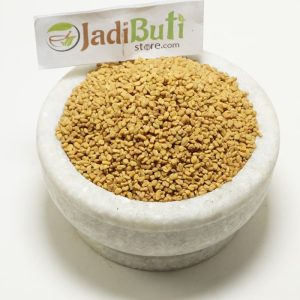

Methi Dana (Organic) – मेथी दाना – Fenugreek Seeds – Trigonella foenum-graecum
₹110.00 – ₹850.00Quick ViewMethi Dana – मेथी दाना – Fenugreek Seeds – Trigonella foenum-graecum.
Methi Name In Different Languages:
Methi in English Name : Fenugreek, Bird’s Foot, Greek Hayseed
Methi in Hindi Name : Methi
Methi in Latin name : Trigonella foenum-graecum Linn.
Methi in Urdu Name : Methi, Tukhme Hulba
Methi in Arabic Name : Hulba, Fareeqa
Methi in Bengali Name : Methi
Methi in Chinese Name : Hu lu ba
Methi in French Name : Fenugrec sénegré
Methi in German Name : Bockshornklee, Kuhhornklee, Griechisch-Heu
Methi in Gujarati Name : Methi
Methi in Kannada Name : Menthya
Methi in Kashmiri Name : Meeth
Methi in Marathi Name : Methi
Methi in Persian Name : Shamleez
Methi in Punjabi Name : Methi
Methi in Sanskrit Name : Methika, Methini
Introduction:
Fenugreek is cultivated in almost all the states. Vegetables are made from fenugreek leaves. Its seeds are used in a variety of dishes for diet and as a medicine. Flowers and fruits of fenugreek are found in the months of January to March. Fenugreek plants are one feet high. Its leaves are small and round-shaped. Fenugreek seeds are called fenugreek seeds. It is also found in the Jagannis. Fenugreek found in forests is of low quality. Vegetables of fenugreek granules are made in Rajasthan, besides the vegetables, fodder leaves are made from Dhokles, Mithai and Gotas. Some people make mixed greens of mung and fenugreek seeds. Apart from this, pickle of raw mango and mixing fenugreek and other spices are prepared in it. This pickle is delicious and quality. In winter, fenugreek is consumed mostly in most of the houses.
